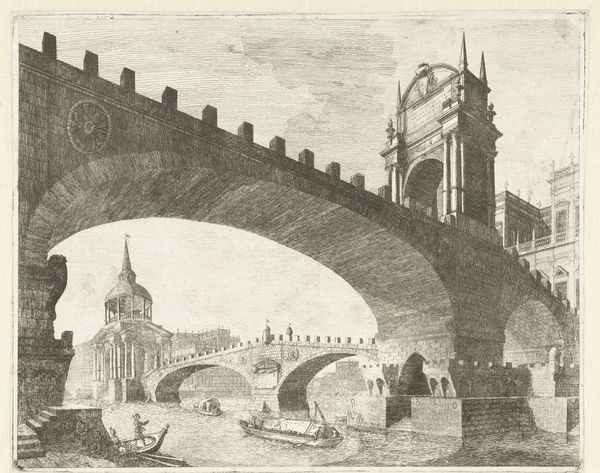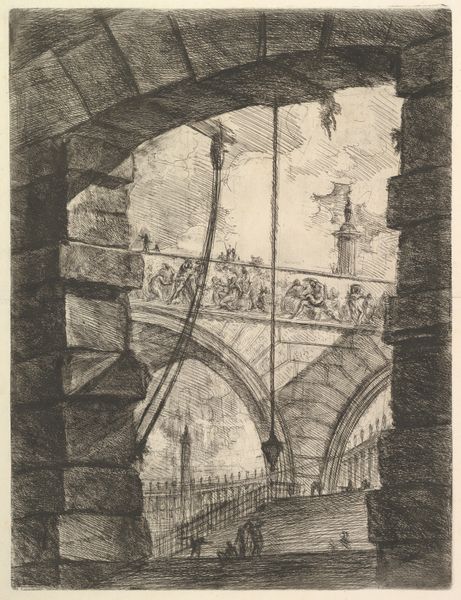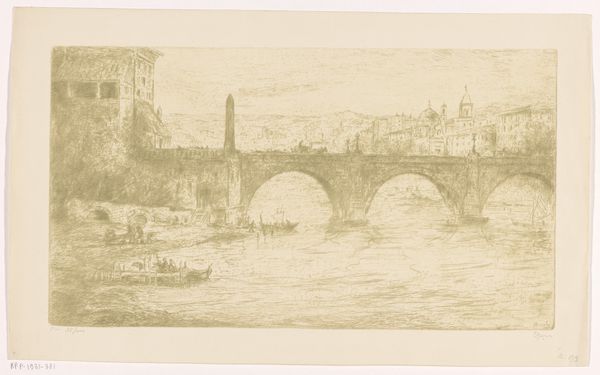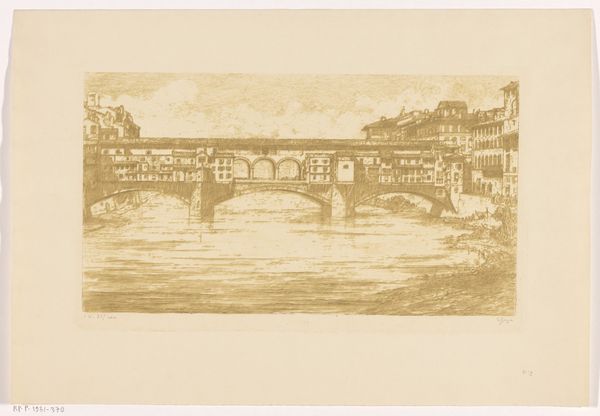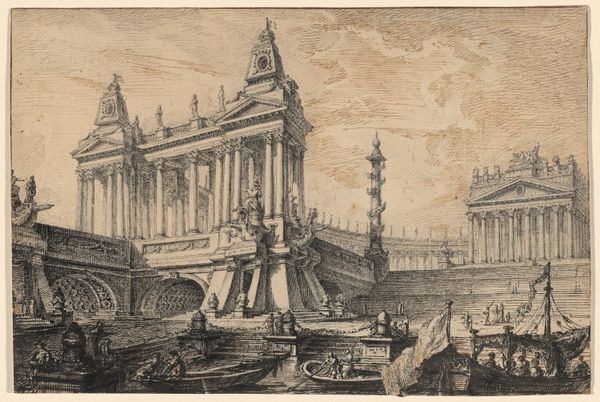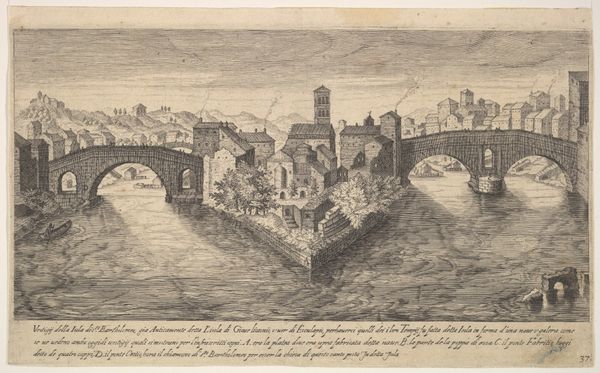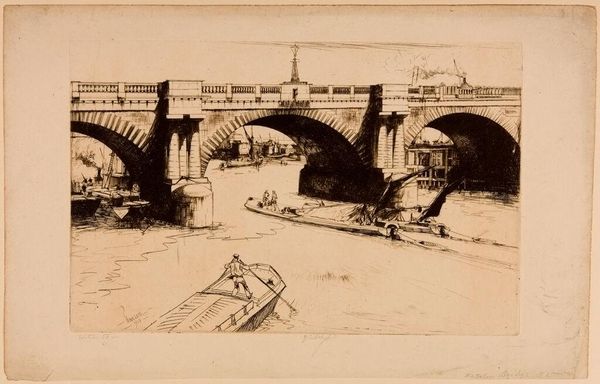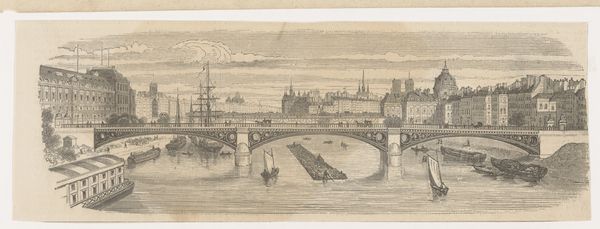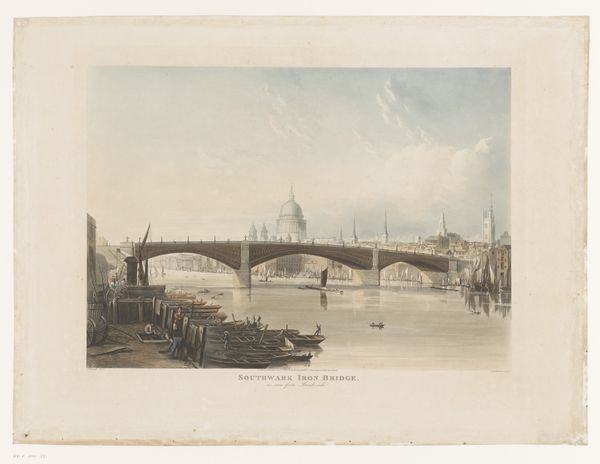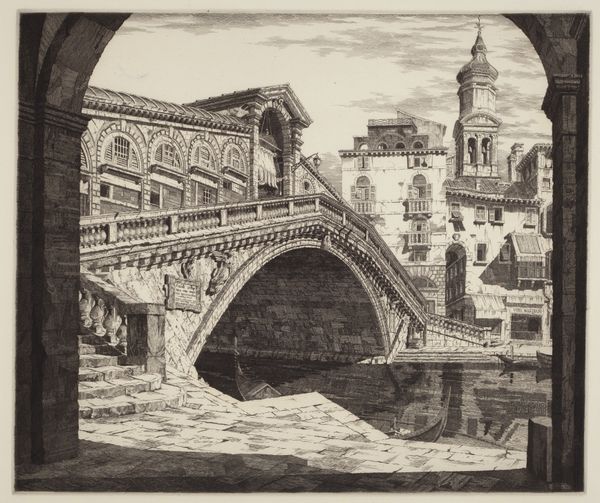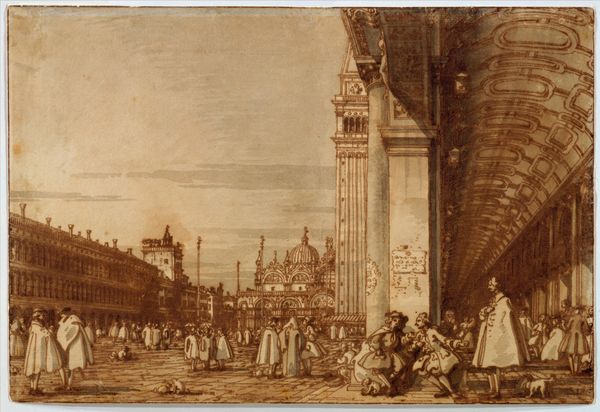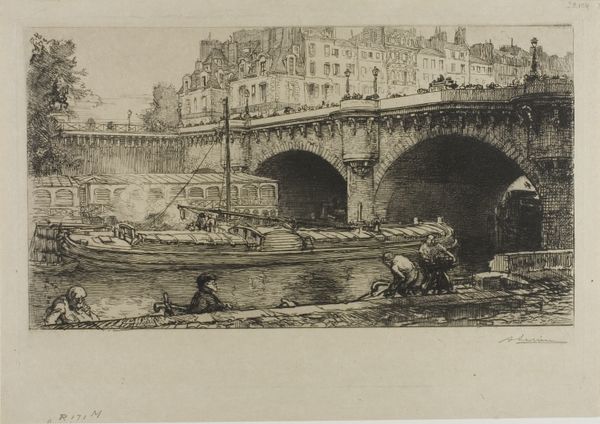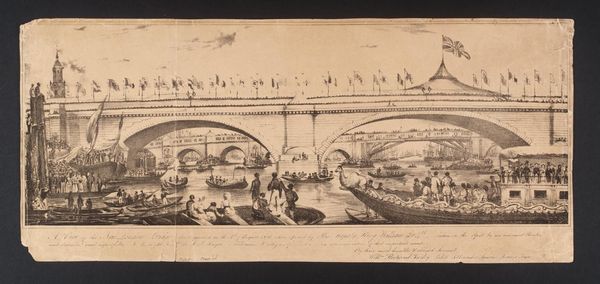
drawing
#
architectural sketch
#
landscape illustration sketch
#
drawing
#
toned paper
#
quirky sketch
#
pencil sketch
#
etching
#
personal sketchbook
#
pen-ink sketch
#
watercolour illustration
#
sketchbook art
Dimensions: overall: 25.2 x 36.4 cm (9 15/16 x 14 5/16 in.)
Copyright: National Gallery of Art: CC0 1.0
Curator: This intriguing drawing is “Architectural Fantasy with a Triumphal Bridge,” created by Hubert Robert around 1760. It appears to be rendered with pen and ink and pencil on toned paper. What are your first thoughts? Editor: Well, I'm immediately drawn to the ochre hue and the stark contrast. It feels… theatrical. A stage set perhaps, before the actors arrive? I wonder about the artist's choice of materials here. Curator: Absolutely theatrical! Robert was fascinated by ruins and architectural capriccio. He lived in Rome for eleven years, deeply influenced by Piranesi's dramatic depictions of Roman monuments. Editor: The etchings make it clear he had material process in mind and what it renders materially: paper, ink and labour to create value... What's intriguing to me is this interplay of precision in the architecture and sketch-like treatment of the figures. Are those enslaved people along the ground floor? Curator: It certainly invites a critical reading. While precise identification is difficult, Robert frequently populated his scenes with figures from various social strata. Consider, too, the looming equestrian statue—likely representing authority and the historical context that power creates social division. I cannot dismiss the clear nod to the artist’s preoccupation with space, society and historical narratives, that clearly speaks to questions of gender, race and inequality of power, especially during this historicized moment and architectural renderings of that power structure. Editor: Exactly! The etching captures this dance between labour, material, social constructs... The labor of extraction, building, decorating is visible in the marks but then gets glossed over in favor of its aesthetic "grandeur". We can clearly ask ourselves how materials such as stone can mask violence? Curator: These kinds of tensions are so revealing for how we grapple with history. Looking closely can bring a reckoning and an understanding that moves beyond simply an aesthetics framework for examining such pieces. Editor: Right, there’s something unsettling about celebrating monumental architecture while remaining ignorant to the human cost of building and maintaining those structures. For the materials and labor expended! Curator: Agreed, it pushes us to actively consider whose stories are amplified and whose are erased within the dominant narrative represented by imposing architecture and heroic statues, which makes Hubert Robert a continuing influence and the subject of constant contemporary re-interpretation through art and history lenses. Editor: Precisely. And by understanding material process and by giving the making, that which constitutes materials of artwork an importance, we acknowledge those costs of history.
Comments
No comments
Be the first to comment and join the conversation on the ultimate creative platform.

